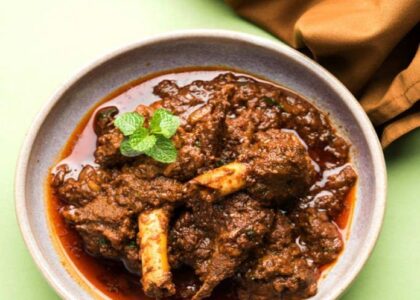The North-Eastern region of India, often referred to as the Seven Sisters, is a treasure trove of diverse cultures, stunning landscapes, and vibrant communities. However, despite its undeniable richness, the people of this region have long expressed feelings of neglect and marginalization by the central government. In this blog, we delve into the historical, geographical, and socio-political factors that have led to these sentiments and explore the complex dynamics at play.
1. Historical Context:
One of the primary reasons for the sense of neglect in the North-East can be traced back to historical factors. The region’s geography, marked by rugged terrain and dense forests, made it challenging for the central government to establish infrastructure and maintain a strong presence during the early post-independence years. This geographical isolation contributed to a lack of connectivity, economic development, and access to basic services for the people of the North-East.
2. Complex Borders:
The North-East shares international borders with Bhutan, China, Myanmar, and Bangladesh. These porous borders have often been points of contention and have posed security challenges. Consequently, the region has seen a significant military presence, leading to concerns about human rights abuses and a sense of occupation among the locals.
3. Ethnic Diversity:
The North-East is a mosaic of diverse ethnic groups, each with its unique languages, traditions, and aspirations. While this diversity is a source of cultural richness, it has also given rise to ethnic tensions and conflicts. The central government’s handling of these conflicts has been a subject of scrutiny, with some feeling that it has exacerbated divisions rather than fostering unity.
4. Economic Disparities:
Economic disparities between the North-East and the rest of India have exacerbated the feelings of neglect. The region has lagged behind in terms of infrastructure development, industrialization, and job opportunities. Limited access to quality education and healthcare has hindered socio-economic progress.
5. Infrastructure Gap:
The lack of adequate infrastructure, including roads, railways, and air connectivity, has hindered economic growth and trade. Frequent disruptions due to natural disasters like floods and landslides add to the region’s challenges.
6. Insurgency and Armed Forces Special Powers Act (AFSPA):
The North-East has experienced insurgency movements over the years, leading to the deployment of armed forces and the enforcement of the Armed Forces Special Powers Act (AFSPA). While these measures were intended to maintain security, they have often been criticized for human rights violations, contributing to a sense of oppression.
7. The Way Forward:
Addressing the concerns of the North-East requires a multi-faceted approach. Investments in infrastructure, education, and healthcare are crucial for economic development and social progress. Conflict resolution through dialogue and reconciliation efforts is essential for lasting peace. Promoting cultural diversity and preserving traditional knowledge can help foster a sense of belonging.
Summing Up:
The central government must prioritize the unique needs and aspirations of the North-East and work collaboratively with local governments and communities to bridge the gap between the region and the rest of India. Only through collective efforts can the North-East shed the feeling of neglect and fully harness its potential as a vibrant and integral part of the nation.
-
Rustic, Real, and Regional: Kullu Trout for Every Food Lover
Spread the loveIf you are craving a wholesome, flavorful fish dish that’s both light and satisfying, Kullu Trout is the answer. Hailing from the scenic valleys of Himachal Pradesh, this trout preparation is a tribute to simplicity — where the freshness of the fish is allowed to shine through, enhanced only by subtle spices and…
-
Flavorful Himachali Chha Gosht Recipe You Can Cook Easily at Home
Spread the loveIf you are looking to bring bold, regional Indian flavors to your kitchen, Chha Gosht is a must-try. This Himachali lamb curry is a rustic, aromatic dish made with marinated lamb slow-cooked in a yogurt-based gravy thickened with roasted gram flour (besan). Rich in spices like cardamom, coriander, bay leaf, and ginger, it…
-
Flame-Kissed Perfection: Rajasthani Kalmi Kebab at Home
Spread the loveWhen it comes to Indian starters that leave a lasting impression, Kalmi Kebab stands tall with its smoky aroma, melt-in-your-mouth tenderness, and bold, royal flavors. Originating from the princely kitchens of Rajasthan, this grilled chicken dish has become a favorite across India, especially at festive dinners, barbecues, and celebratory gatherings. The best part?…
-
Authentic Rajasthani Dahi ke Kebab Recipe for Home Cooks
Spread the loveAmong the many gems of Rajasthani fare, one dish that stands out for its elegance and surprising simplicity is the Dahi ke Kebab — soft, creamy yogurt-based kebabs that melt in your mouth. Often served as an appetizer in royal thalis or festive meals, Dahi ke Kebab (Yogurt Kebabs) are a vegetarian’s delight.…
-
Bring Jodhpur to Your Kitchen with This Easy Kachori Recipe
Spread the loveWhen it comes to Indian street food, few snacks can rival the irresistible charm of Pyaaz Ki Kachori — a flaky, golden pastry stuffed with spicy onion filling that bursts with flavor in every bite. This beloved Rajasthani treat, which hails from the vibrant city of Jodhpur, has earned a place in the…
-
Bring Rajasthani Flavors to Your Kitchen with Homemade Thepla
Spread the loveIf you are looking for a wholesome, flavorful, and satisfying flatbread that’s as healthy as it is delicious, Methi Thepla should be at the top of your list. A beloved breakfast and snack in both Rajasthani and Gujarati households, Methi Thepla is a spiced flatbread made with fresh fenugreek leaves (methi) and a…









